The Way It Is/ The tragedy of history repeating itselfby Gordon Kirby |
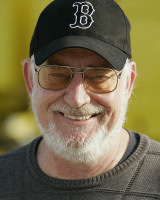 'IndyCar team owners at odds with top series officials'. Thus read the headline in USA Today a couple of weeks ago. As we all know, the owners are pretty unhappy with the Dallara DW12 program, particularly the cost of many parts, and there are suggestions that some team owners are trying to exert more influence or even buy IndyCar.
'IndyCar team owners at odds with top series officials'. Thus read the headline in USA Today a couple of weeks ago. As we all know, the owners are pretty unhappy with the Dallara DW12 program, particularly the cost of many parts, and there are suggestions that some team owners are trying to exert more influence or even buy IndyCar.
At the heart of this latest disagreement between the team owners and sanctioning body is the sad state of IndyCar's overall media exposure and sponsorship income which has driven the series down the spec car route resulting in the current truly Soviet era centrally-planned, cost-controlled car entirely removed from the free market. As we also all know this state of affairs is the product of Indy car racing's long and depressing history of a despairing lack of leadership. It's gone on for decades with the owners and series officials constantly squabbling among themselves as CART followed USAC and the IRL/IndyCar replaced CART or Champ Car. And as they argued among themselves amid a giant revolving door of managers, administrators, marketing mavens and pr flaks they failed to grasp the key element to success in any modern sport. 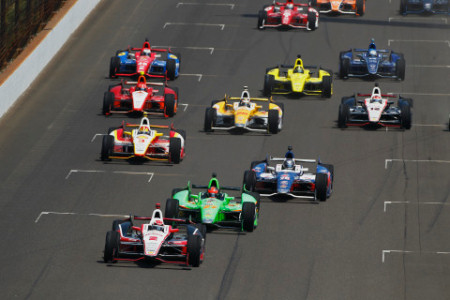 © LAT USA Bernie Ecclestone and Bill France Jr.--and every other major sports mogul--focused their minds on building their TV exposure and rights fees. This was the key to success for every modern sport from the NFL and MLB to the Olympics, tennis, golf, college football and basketball, etc, etc. But over many decades the powers-that-be in Indy car racing dropped the ball making the way forward long and difficult. Today Indy car racing is consigned to the margins as a minor league sport with tiny TV ratings and little or no leverage to generate much TV income. There's hardly any TV money for the teams and not enough exposure for most them to be able to sell major sponsorship. It's a vicious circle and so it's been for many decades. Back in the mid-seventies in the years immediately before Tony Hulman's death the USAC Championship faced an increasing web of problems. After a boom of road racing and international interest in the sixties, USAC was in decline through the seventies following an inexplicable decision in 1970 to eliminate a growing roster of road races and the traditional dirt track races to focus entirely on paved ovals. Indy 500 aside, most USAC races paid very little prize money, didn't draw very big crowds and weren't televised. The series was all about Indianapolis with a string of second-rate races running at only seven tracks. Dan Gurney retired from a superb driving career in 1970 and focused his efforts through the seventies on running All American Racers, manufacturers of the Eagle, the most successful Indy car of that era. AAR also ran one of the top USAC teams with Bobby Unser driving. "Indy was the hub around which the USAC championship revolved," Gurney observed about those days. "The tradition at Indy was to have one race a year and it was a big one that paid a great purse and had tremendous history. It was just a great event. At the time it was far and away the biggest in the world of racing. Maybe Le Mans came close, but Indy was the big one. "USAC was a child of the Speedway," Dan went on. "USAC was there to run the month of May and it also was allowed to have its own additional other races that made up the national championship series. That was fine, not a problem, but the rest of the championship series was bogged down. It didn't have any leadership and was more or less derelict. Each particular promoter at each track was free to either promote or not promote. It was a very loose organization and there wasn't much linkage between all the other races and the Indy 500. The rest of the races were sort of orphans that nobody paid attention to. Nor had anybody heard the word marketing. The waters were stagnant. You can't run the business of a racing team with just one big race a year and the rest of them are a bunch of losers, unless you're doing it as a hobby and not a real business." 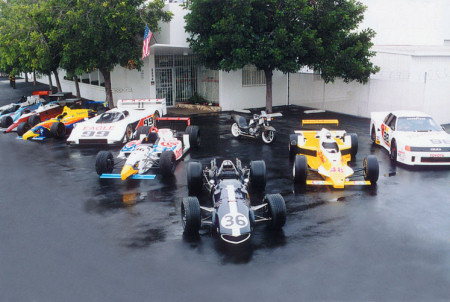 © Eagle Racing Cars / All American Racers, Inc. Intended originally as a lobbying group, a union in effect, Championship Auto Racing Teams (CART) began to come together during the summer of 1978. The plan was for the team owners to present a united front in bargaining for a better financial package and more input and control over car and engine rules. In 1978 Gurney wrote what became known as the 'White paper' setting out his vision for raising the sport's profile and making it a business for all concerned. He also coined the name of the organization. "Let's call it CART, or Championship Auto Racing Teams," Gurney wrote. His overall view of the situation was captured in two key paragraphs of his white paper. "In all of our discussions, as car owners and team leaders," Dan wrote, "we have agreed that it is essential that we continue to support USAC as the sanctioning body for Championship racing. The only improvement will be that USAC will work for us and support our cause and our policies as well. It should be clearly understood that the purpose of this organization is to make racing better in an overall way. Not just for the car owners and drivers, but also for the track owners and promoters and the sanctioning body and the sponsors and supporters, and last but certainly not least, the racing fans and paying spectators. "In the final analysis of course, large crowds of paying spectators are the keys to success for all. Track owners and a sanctioning body who aggressively promote these big events — which by contract will feature the teams and driving stars, will get the crowds which in turn excites the sponsors and TV networks and the crowd, etc., thereby upgrading the entire sport/business. It is my firm belief that rather than cutting the cost of racing, which in itself is nearly impossible, it is far more important to make money more readily available by increasing the popularity and prestige of the sport with the general public." The team owners who created CART included Gurney, Roger Penske, Pat Patrick, Tyler Alexander and Teddy Mayer representing McLaren, Jim Hall of Chaparral fame, and Bob Fletcher and Jerry O'Connell. Another key man was owner/driver A.J. Foyt, the legendary, four-time Indy 500 winner who had been a close friend of Tony Hulman and carried great clout with both USAC and the Hulman family. When Foyt agreed to go with CART and became, for a short while at least, CART's most vocal supporter, the die appeared to be cast. During the summer and early fall of 1978 CART tried to negotiate with USAC but the old club rebuffed the team owners, ignoring their suggestions and requests for formal discussions. "If the Speedway wouldn't take hold and provide real leadership to the rest of the circuit, just to survive, somebody else was going to have to do it," Gurney remarked. "We asked the Speedway to understand the predicament that we were in. We talked to them and they essentially were happy with the status quo. As far as they were concerned they were okay, and yet they would not relinquish the control that USAC had over the rest of the races. 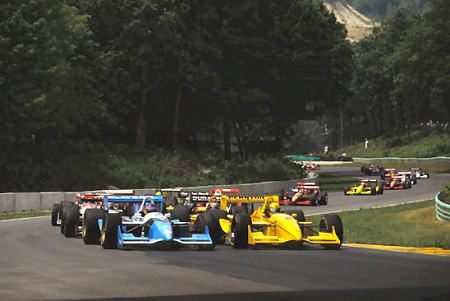 © Paul Webb "We were trying to be genuine, professional teams and were watching other sports blossom and get big recognition on television and everywhere else. We asked, where were we headed? And they told us they had no plans. There were people at the Speedway who were still literally living in the 1940s. They essentially thought things were okay as they were, and we didn't. Whether we were inept, and I undoubtedly think we were, but it was a classic case where revolution follows. It was taxation without representation." In Dan's mind there were never any thoughts of trying to take over the Speedway as some people subsequently suggested. "We had never targeted the Speedway for attack. We only asked them to provide the leadership. There was never any discussion about doing something that would harm the Speedway, although I would say that I was probably too trusting. Maybe Patrick and Roger and one or two others saw the Speedway as a possible acquisition. The Speedway may have been a little more clairvoyant than I was. But I never heard one tiny hint that was the case. "My naivete, if you want to call it that, was that I thought the potential was so much bigger than what had been achieved and that it would be good for everybody. It would raise all boats and it would be terrific, and I still believe that. Had the Speedway just taken a moment to look into their crystal ball at the future, things might have been different and we could have all worked together." But even as CART took control of Indy car racing Gurney worried that the new organization wasn't being run to the standards he had hoped for. He believes CART stumbled from the moment it left the starting gate in 1979 because of the poor TV contract that was negotiated. "I think the first major mistake CART made was when they established the first television contract," Dan declares. "I felt the TV contract was going to be the most important element of this new organization. I couldn't see how others could miss that point. It seemed obvious to me. I asked to be included in the group of people that would negotiate with the television networks and I was refused. The attitude of the guys who did the deal was, 'We'll take anything. Any exposure on TV is good for us.' There was no effort that I was aware of to extract serious television money from the networks even though other sports/entertainment businesses were already doing that very successfully. I thought that was a gigantic mistake. I think at that point they dropped the ball enormously." 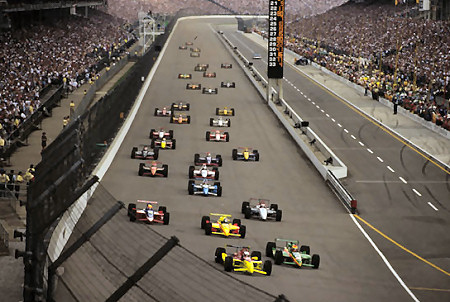 © Paul Webb "The overall management was lacking in almost every category," Dan remarks. "It reacted to a few key people who were more equal than others. Basically, if you're going to have a potential billion dollar sports/entertainment business you shouldn't have Forrest Gump as the CEO. You should have somebody who would put the team owners to shame, but they couldn't face the humiliation of having somebody really good in there telling them what to do. That's the way I look at it. As a result, it was a longterm deterioration and a list of Forrest Gumps who ended up playing the part of the CEO." In 1995 and '96 CART enjoyed respectable average TV ratings of 2.2 and 2.1 with some races pulling as high as a 3.0 or even 4.0. But CART's internal squabbling and lack of leadership eventually allowed Tony George and the IRL to outflank and absorb them and the IRL then proceeded to repeat CART's mistake with television, negotiating a longterm deal for a tiny rights fee, as well duplicating USAC's blunder of the '70s by racing, initially at least, exclusively on ovals. Also like USAC thirty-five years ago today's IndyCar series is entirely dominated by the Indy 500 with few other high-profile events. And with the IRL and IndyCar came the dumbing-down of the cars and the arrival of the dreaded spec car era, a colossal mistake on its own. Dan Gurney's analysis of CART's rise and fall is spot-on and equally applicable to where the sport is today. Randy Bernard has discovered he's walked into a very tough job with many detractors, few supporters and an extremely weak base. What's the solution? How to unravel so many decades of mismanagement? How can IndyCar rebuild its audience, regain its rightful place in racing's hierarchy and enjoy the fruits of an open, free market formula? The lessons of history provide a powerful argument that Indy car racing has been America's most poorly-run sport. It's not a very encouraging story and to turn it around will require a quality of leadership and spirit of working together for the common good that we've never had the pleasure to see. Are the team owners--or anyone else--up to the job? |
Auto Racing ~ Gordon Kirby Copyright 2012 ~ All Rights Reserved |
